NIL
Peace between Israel and Syria is possible, Damascus businessman tells 'Post'
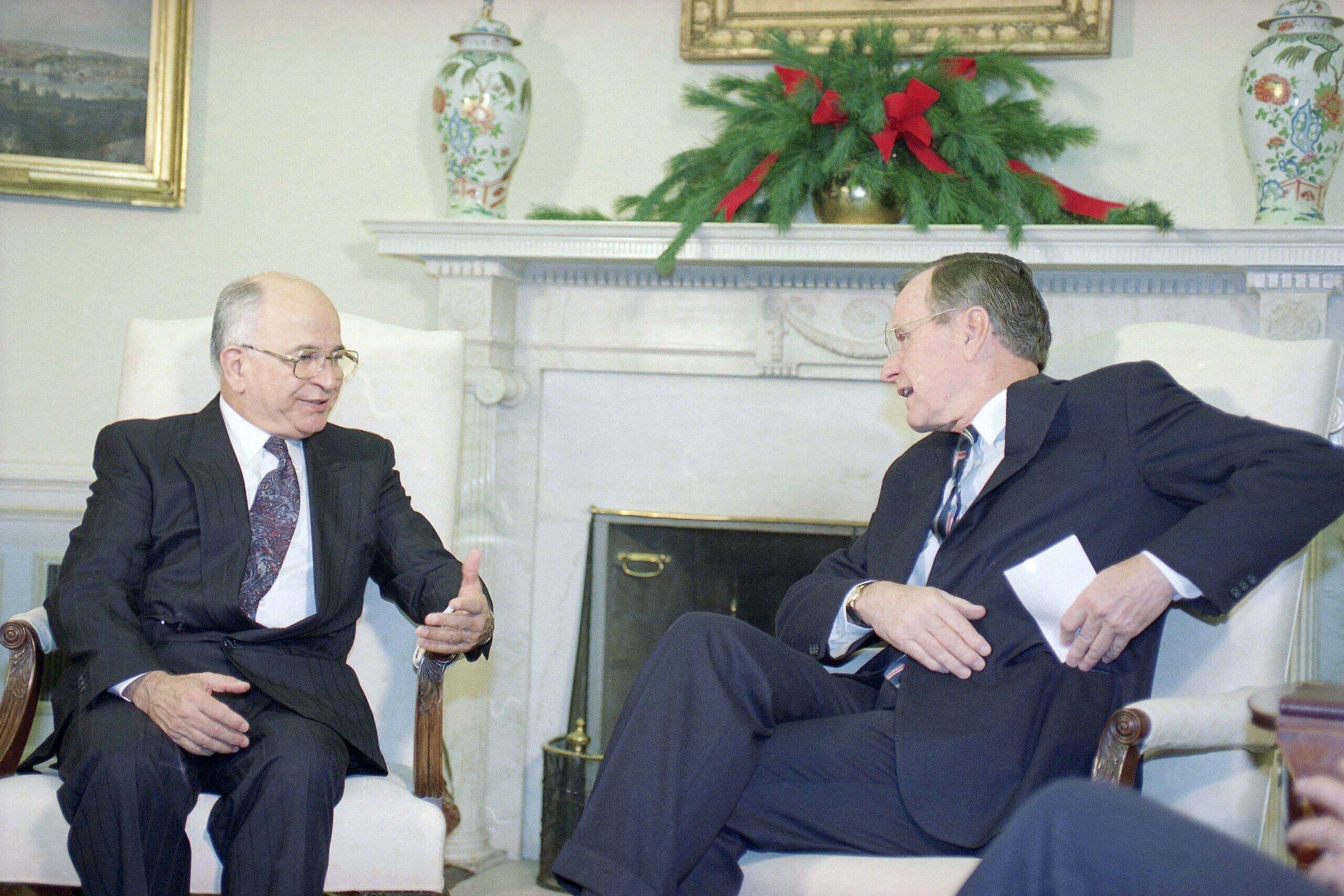
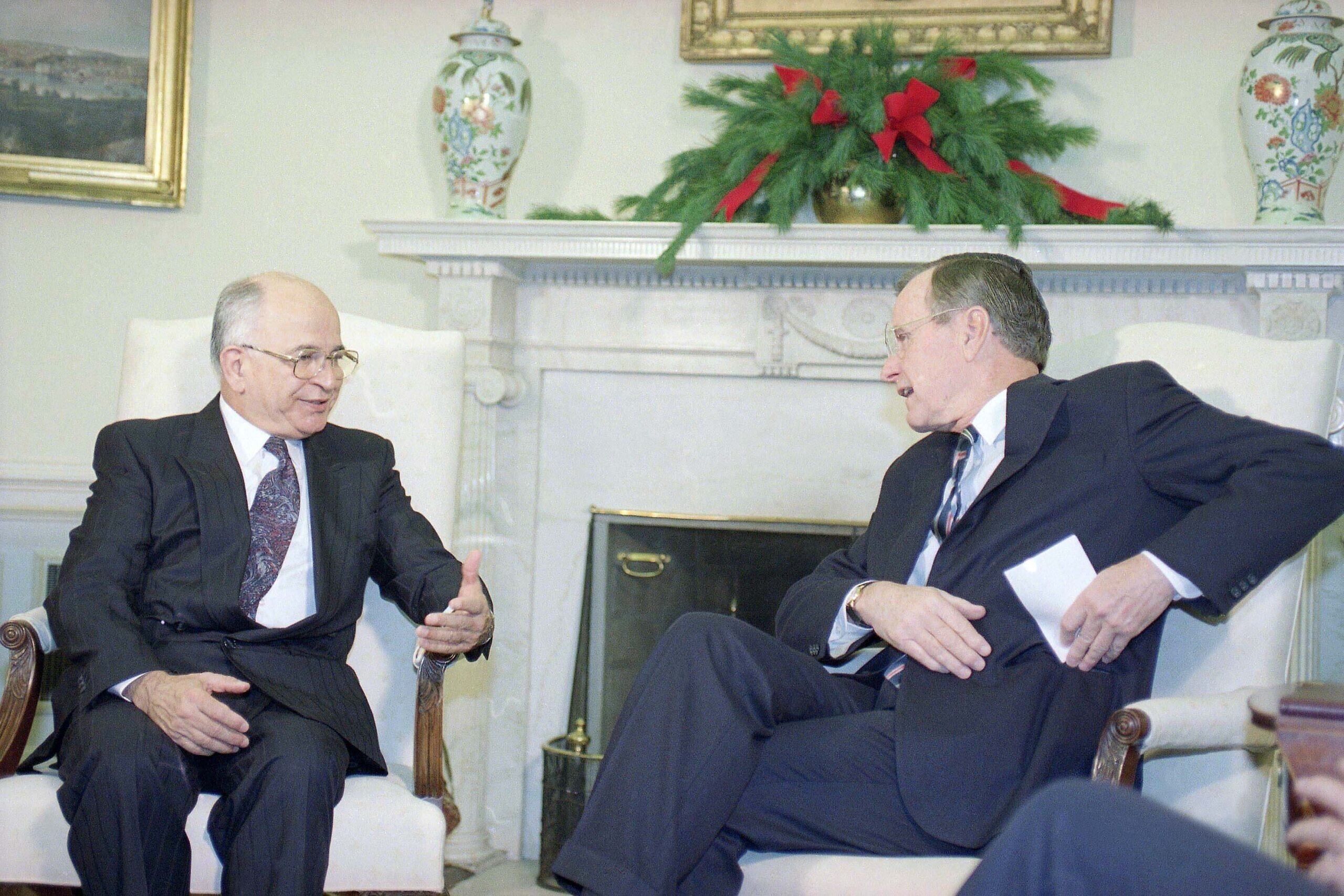
Yahya Kirdi, a Syrian businessman and owner of several sports clubs, lays down his vision for the prospects of a new Syrian-Israeli peace.
Syrian-born businessman Yahya Kirdi envisions a future where Syria and Israel can coexist peacefully despite decades of hostility. In an extensive interview, he shared his background, thoughts on Syria’s political landscape, and aspirations for regional peace.
Born in Aleppo, Syria, to parents of Turkish descent from Kilis, Kirdi’s identity straddles some of the multiple cultures that are Syria’s hallmark. After being stripped of his Syrian citizenship by the Assad regime, he now holds Canadian citizenship and has built a successful business career.
“I own soccer clubs in Europe and Dubai, as well as companies specializing in sports marketing and petroleum trade,” Kirdi explained. His professional background includes being a former professional soccer player and working with UNICEF in 2009.
When asked about his willingness to speak with Israeli media, Kirdi expressed no reservations. “Israeli media are advanced, developed, and free, pursuing truth regardless of where it leads,” he stated. “This presents an opportunity to convey my voice and that of Syrians to the Israeli and Jewish people – that we desire to live peacefully alongside our Jewish neighbors.”

Kirdi rejected the notion that Arab populations are inherently hostile toward Israel, characterizing this as “a deception perpetuated by Arab rulers to prevent their people from seeing the truth.”
When prompted to describe the reasons for the fall of the Assad regime in his view, Kirdi spoke frankly about what he sees as the geopolitical realities behind recent developments.
“The collapse of [Bashar al-]Assad was essentially a convergence of American, Turkish, and Russian interests,” he commented. “To be realistic, the fall involved surrendering territories without fighting. Additionally, Israeli strikes against Hezbollah and the withdrawal of Iranian militias played a crucial role in bringing down Assad’s regime.”
Kirdi expressed concern about the rise of Ahmed al-Sharaa’s administration in parts of Syria. “A man unknown to Syrians before, yet on terrorist watch lists and wanted by international justice, who pledged allegiance to al-Qaeda leaders Ayman al-Zawahiri and Osama bin Laden,” Kirdi said with evident frustration, questioning the international community’s relative silence about Sharaa’s rise to power despite his connections to ISIS, Jabhat al-Nusra, and Hay’at Tahrir al-Sham.
“His current rule is totalitarian and sectarian, knowing only the language of bloodshed,” Kirdi asserted about the new Syrian leader. “We should understand that changing Afghan-style clothing doesn’t mean changing the ideology within al-Sharaa himself.”
The Islamists backing Sharaa’s admin.
The businessman criticized Sharaa’s administration for relying on non-Syrian, hardline Islamists, including “elements from Hamas and Islamic Jihad among his fighters, as well as militants from Chechnya, Uzbekistan, Uyghurs, Egyptians, Moroccans, Tunisians, Algerians, and Libyans.”
Kirdi questioned whether such a diverse array of foreign fighters could truly represent Syrian interests.
“This is an Islamic jihadist movement with no connection to Syrian identity,” he argued. “We rose against Assad senior and then Assad junior and sacrificed our lives. There are thousands of honorable military personnel who defected from Assad’s regime and paid a heavy price – they are now marginalized under a one-color totalitarian rule that gives no space for others to participate in political life.”
The businessman emphasized that Sharaa’s rule fails to respect Syria’s diverse fabric, which includes “Islam, Judaism, Christianity, Armenians, Druze, Circassians, Kurds, and Syrian Turkmen.”
He characterized the new Syrian leader’s inclusive gestures as “merely theatrical performances for global media,” while the reality remains “a totalitarian Islamic rule – an extremist Islamic emirate relying on non-Syrians for governance.”
Kirdi revealed he had filed complaints against the UN secretary-general and UN envoys to Syria Geir Pedersen and his predecessor Staffan de Mistura, accusing them of corruption and collusion with certain Syrian opposition members. He also mentioned he is promoting legal action against Bashar Assad and “4,000 members of Assad’s gang” through Canadian courts, with the case reportedly transferred to the International Court of Justice.
The Syrian-Canadian businessman also referred to the role of Qatar as a mediator in Middle Eastern conflicts, particularly after October 7. Kirdi expressed skepticism. “My point of view, which I shared with close friends in the US and Canada, was that Israel should be careful, very careful. Because first, Qatar relies on information from people who are not Qataris. It has Palestinian, Arab, European, and even American political advisers. Even media professionals who hold Israeli citizenship through media outlets it [Qatar] owns. This is clear to everyone. How can this be a mediator and a judge at the same time? With all due respect to the Qataris, you cannot succeed with this mediation, because it will not be fair. Qatar succeeded in moving the World Cup it hosted from June in the summer to winter, but it failed in the negotiations on the Hamas and Israelis case.”
Kirdi suggested Canada would be a more suitable mediator than Qatar, claiming the war might have ended sooner with different facilitation.
“I, personally, have a solution and plan to stop the war that would benefit all parties and end the conflict in Gaza – a very suitable solution for the Israelis and Prime Minister [Benjamin] Netanyahu, which friends in Israel appreciated,” he claimed, without providing further information.
When discussing the future political landscape of Syria, Kirdi advocated against federalization or division into multiple states.
“We are deeply concerned that the current policies pursued by authorities may lead to partition, which benefits no one, neither internally nor externally. Partition or federalism would make Syria available to extremists and radicals who threaten regional security,” he warned.
Instead, Kirdi envisioned “a single Syrian state led by an authority built on modern foundations, where businessmen contribute significantly to reconstruction and improving the economy.”
He stressed the need for “wise leaders who understand the people’s interests and how to protect them, who are aware of international conditions and work diligently with others to prepare Syria and the region for peace.”On the possibility of peace between Syria and Israel, Kirdi was optimistic.
“Yes, we believe peace is possible and see that the Syrian people are ready for a peace process with Israel,” he stated. “We don’t believe that the long-term incitement carried out by the regime has established eternal hatred. The people have become rational and aware, knowing their interest lies in peace, provided there is a reasonable leadership capable of securing Syrians’ rights diplomatically, and Israeli cooperation with the idea of peace that guarantees people’s peace, not regimes’ peace.”
Kirdi highlighted the potential role of business leaders in fostering peace.
“We believe that businessmen can play a major role in this, and historical experience has proven that the best to lead peace are sincere businessmen surrounded by a rational group of politicians and thinkers,” he said. “We hope to have a role in peace because this serves Syrians and all peoples of the region.”
Regarding his own political future in Syria, Kirdi distanced himself from the current administration, despite rumors of being offered a high-ranking position.
“We don’t see a political role for ourselves under an authority that seeks to entrench dictatorship, and we don’t accept holding a position in such an atmosphere. We want a civil, democratic state,” he affirmed. He would participate only when the system genuinely serves Syrian society and fulfills its aspirations, he indicated.
On the Kurdish question in Syria, Kirdi acknowledged strong fraternal relations between his community and Kurdish Syrians but expressed concern about certain Kurdish political factions.
“Everyone knows our relationship with the Kurdish component is fraternal, with unbreakable ties between us, having lived side by side in this region,” he said. “However, the problem is that there are Kurdish political parties that want to carve out a part of Syrian territory and attach it to separatist projects that threaten Syria’s national security and the security of our neighbor Turkey and other neighboring countries.”
On regional dynamics, Kirdi referred to Turkey’s significant influence in Syria.
“Turkey has a tremendous ability to influence Syria, exceeding any neighboring country,” he said, citing shared borders, social interconnections, and history. “I cannot imagine a solution and stability in Syria without reaching an understanding with Turkey. We must address their concerns and accept their soft contribution to reconstruction and stability, but also stand against any hegemonic tendencies.”
Perhaps most striking were Kirdi’s views on peace with Israel. “Peace has always been possible if it were from people to people,” he asserted. “There is no enmity between Syrians and Jews; the dispute between the Syrian state and Israel concerns the Golan Heights, which can be managed through dialogue.”
He characterized the current moment as a “historic opportunity” for peace between the two peoples, contingent upon Israel’s willingness and international support for developing a moderate, democratic civil authority in Syria.Kirdi highlighted the role of business leaders in fostering peace.
“You cannot talk about the triumph of democracy without a free economic system,” he stated, emphasizing that economic development would be decisive in gaining popular support and shaping politics.”
Kirdi spoke warmly about Syria’s cultural heritage and openness. “The Syrian people are simple and kind. They love others, love goodness, love work, and hate wars,” he said. “In all Syrian cities, from Latakia to Aleppo to Damascus to Deir el-Zor to Raqqa to Hasakah, we have neighborhoods and streets named after Jewish quarters. Jews were our neighbors.”
His message to readers emphasized the Syrian people’s exhaustion with both authoritarianism and war.“Trust the Syrians, for they are the children of ancient civilizations. They are not extremists and are open to all cultures of peoples who seek peace,” Kirdi concluded.
NIL
ESPN analyst names two college football programs that should replace ‘wasted’ playoff spots
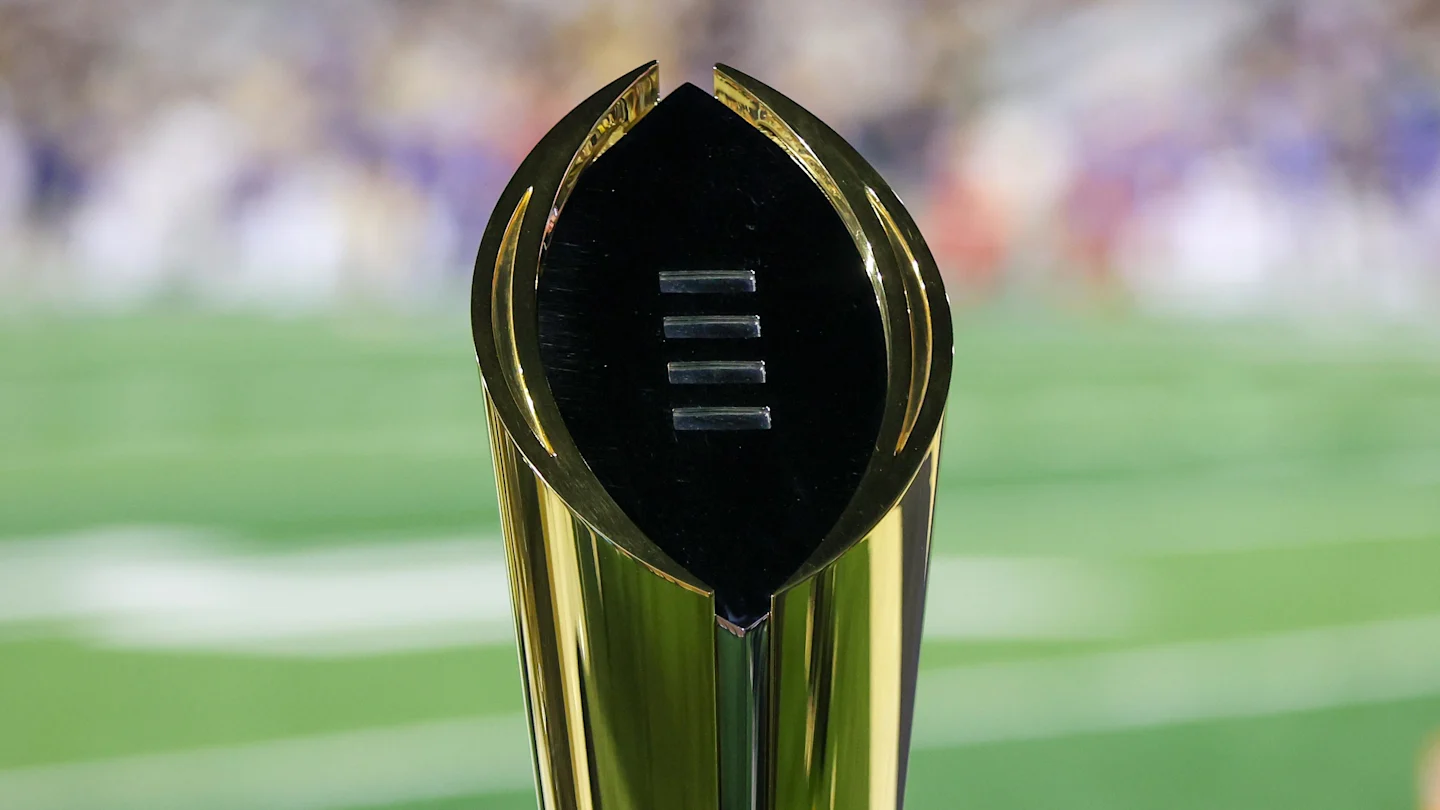
Monday morning brought the inevitable fallout from the College Football Playoff selection committee’s final bracket reveal. The inclusion of multiple teams from outside the major conferences has sparked fierce debate regarding the exclusion of arguably more talented rosters. On ESPN’s Get Up, the conversation turned heated regarding which teams truly deserved a chance to compete for a national title.
Analysts dissected the committee’s decision to favor conference champions from smaller leagues over battle-tested programs with higher talent ceilings. The argument centers on whether the playoff should feature the absolute best teams or simply adhere to a format that rewards access for all conferences.
One prominent voice on the network didn’t hold back his frustration with the current field composition. He argued that the presence of these smaller schools dilutes the quality of the postseason and robs viewers of high-stakes matchups between the sport’s biggest brands.
Dan Orlovsky Claims Committee Wasted Playoff Spots on Group of Five Teams
Former NFL quarterback Dan Orlovsky pointed directly at the Texas Longhorns and Notre Dame Fighting Irish as the teams that were unjustly left out during ESPN’s Get Up. He contended that their spots were effectively given away to the Tulane Green Wave and James Madison Dukes.
“Notre Dame and Texas should be in instead of—not being disrespectful—both James Madison and Tulane,” Orlovsky said. “We could be honest that those two spots are being wasted on those two programs that deserve a meaningful game.”

The controversy stems from a unique scenario where the committee prioritized conference champions despite significant disparities in team strength. Texas Longhorns head coach Steve Sarkisian led his team to a 9-3 record, closing the regular season by winning six of their final seven games.
This stretch included a victory over the then-No. 3 Texas A&M Aggies. Quarterback Arch Manning overcame early season struggles to throw 17 touchdowns against only two interceptions since Week 7.
Notre Dame Fighting Irish head coach Marcus Freeman saw his squad finish 10-2 after rattling off 10 consecutive victories. The Irish posted an average margin of victory of nearly 30 points during that streak and boasted a top-five scoring offense.

Orlovsky’s sentiment reflects a broader belief that the playoff should showcase teams capable of winning the national championship. Critics argue that matchups involving teams like James Madison lack the national appeal and competitive balance found in games featuring traditional powers.
The debate highlights the ongoing struggle to balance inclusivity with the desire for elite football. While Tulane and James Madison benefited from the current structure, the absence of two projected title contenders has left many questioning the system’s validity.
Read more on College Football HQ
NIL
$5.3 million college football quarterback predicted to return to school, forgo NFL Draft
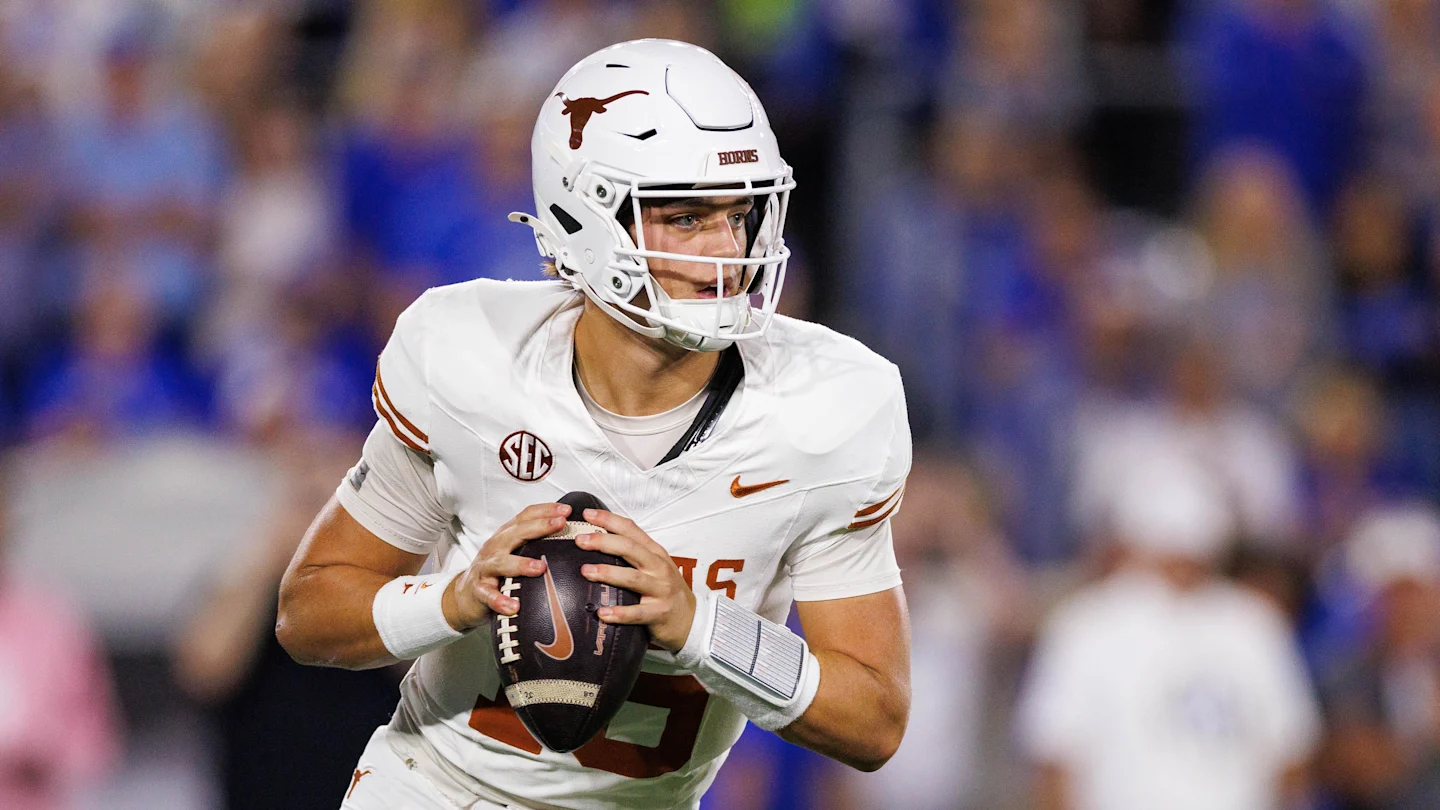
As the college football calendar winds down, Texas’ quarterback situation has become a national story.
Arch Manning finished the 2025 regular season with 2,942 passing yards, 24 touchdowns and seven interceptions, while rushing for 244 yards, eight rushing TDs and posting a 145.8 passer rating.
These numbers helped Texas reach a 9-3 regular-season mark (6-2 SEC) and a No. 13 ranking going into bowl season.
Manning’s sustained performance has positioned him as a credible 2026 NFL draft candidate, even as doubts persist about his readiness.
Monday’s PFF 2026 mock draft, in a writeup projecting the Pittsburgh Steelers at No. 19, explicitly assumed a scenario where “it’s feeling increasingly likely that Arch Manning … return[s] to school,” which pushed that mock to address other positional needs instead of quarterback.
That framing echoes multiple recent takes suggesting Manning is as likely to stay in Austin for 2026 as he is to jump to the NFL.

Manning arrived at Texas as one of the most hyped recruits in recent history: a five-star, consensus No. 1 quarterback in the 2023 class out of Isidore Newman (New Orleans) with five-star ratings across the major services.
He carried a pedigree and a polished high school resume (over 9,700 total yards and 140 total TDs) that fueled early NFL and media projections long before he even logged a college start.
2025 was Manning’s first extended turn as Texas’ starter, and while he showed growth, he also displayed some inconsistency against top defenses.
Still, he remains the highest‑paid athlete in college sports, with an NIL valuation of $5.3 million, fueling debate over whether that lessens his motivation to leave school early.
Underclassmen are generally required to apply for special eligibility for the NFL Draft by mid‑January, with the league setting Jan. 15 as the standard deadline and allowing slight adjustments for players from earlier‑finished seasons or championship teams.
That timeline gives Manning and Texas several weeks after bowl play to consult agents, advisers and the NFL’s College Advisory Committee before a final call.
Read More at College Football HQ
- SEC quarterback enters transfer portal after college football season
- Star SEC running back enters transfer portal after College Football Playoff snub
- 7,000-yard college football quarterback enters transfer portal
- Major college football program declines bowl game after College Football Playoff snub
NIL
Michigan football recruiting: How NIL affected signing day drama
ANN ARBOR – National signing day has always been an opportunity for college coaches to celebrate a new wave of players entering their program.
But in the current name, image and likeness-driven landscape of NCAA football, signing day also is one of the most stressful days of the year for coaches.
This signing day was no different, with dozens of prospects in the 2026 class having a late change of heart about their college choices just before putting pen to paper to make their verbal commitments official.
Michigan and head coach Sherrone Moore weren’t immune to this year’s signing day chaos. The Wolverines had 28 commits entering last Wednesday, the start of the early signing window, but only signed 27 recruits after some late reshuffling in the class.
The drama began Wednesday morning when Mansfield (Texas) four-star receiver pledge Zion Robinson announced he was “postponing signing until further notice.”
According to 247Sports’ Mike Roach, Stanford made an aggressive NIL play for Robinson. The school, which has had five straight losing seasons, successfully flipped the top-200 prospect on Thursday.
Meanwhile, Mineral (Va.) Louisa County five-star running back Savion Hiter, the crown jewel of Michigan’s class, didn’t sign on Wednesday. The delay sparked intense speculation on fan message boards about Hiter’s status, but Michigan was able to seal the deal Thursday morning.
According to Rivals’ Steve Wiltfong, Hiter, the top-ranked running back in the country per the 247Sports Composite, didn’t sign Wednesday because of “minor contractual details.”
The signing period fireworks didn’t end there. Michigan also lost Irmo (S.C.) Dutch Fork four-star edge Julian Walker to South Carolina on Thursday as the top-100 recruit chose to play for his hometown school where his father is on staff, but Moore’s program countered with a major move of its own.
It flipped Cartersville (Ga.) four-star receiver Brady Marchese from Georgia, adding a new top-150 wideout to its 2026 recruiting haul.
Moore was asked during a news conference Monday how much NIL has impacted late flips on signing day.
“It’s definitely out there,” Moore said. “It’s definitely a thing. It’s something you can’t ignore and you have to have a plan for it, and you have to adapt to it, because, yeah, that’s part of it. You think you got somebody signed, and then somebody shoots out something (other schools offering more in the NIL space), or does something, and you’ve got it cemented of what you’ve all agreed to, and all those other things, all those other pieces that are part of college football now, but that’s just college football now. You’ve got to adjust and you’ve got to adapt.”
More than ever before, roster construction in college football is driven by NIL funding. Not only is it prevalent in recruiting high school prospects, but also players in the transfer portal and retaining players on the current roster.
The biggest difference between high school recruiting and the portal is the timelines. Prep prospects can commit to a school at any time, but that verbal pledge doesn’t become binding until the player signs with the school. For example, Robinson and Walker were both committed to Michigan since last summer before flipping. Marchese was pledged to Georgia since March.
The portal is a more condensed timeline. The two-week window opens Jan. 2, and prospects usually try and find a new home quickly so they can enroll at their new schools in time for the start of a fresh semester.
Moore said Michigan is prepared.
“The big thing about the portal is not only getting the right fit, but the relationship,” he said. “Obviously, the right player, but people that fit the program, the people that fit the culture, the people that fit involved in the program. You’ve got to be ready. We’re on it. We’ve been on it. You’ve got to stay on it.
“You’ve got to have lists ready to go. Obviously, you can’t talk to the kids until they get in it. So, we’ve got to do everything we can to be prepared for that. From a financial basis, all that is a piece of it, right? We’ve got to make sure we’ve got a plan for all of it, and we do.”
NIL
Gopher Football’s Top NIL Earners Revealed
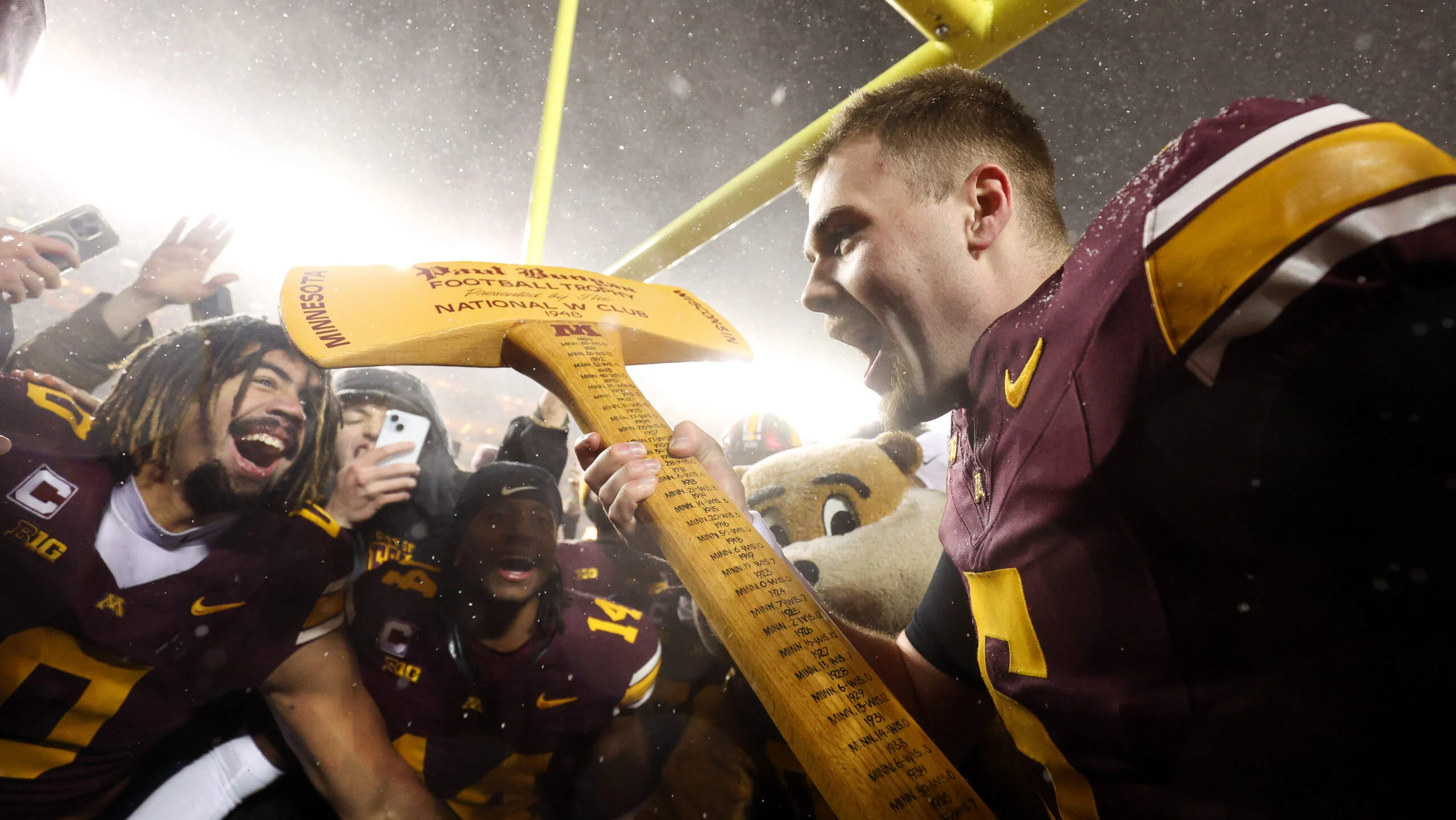

2025 was a disappoint season for the Minnesota Gophers. P.J. Fleck was starting a redshirt freshman quarterback, but heading into the season there was legitimate hope this team could win nine or ten games.
Not only did they win just seven, but Fleck got embarrassed by Iowa in his ninth season on the job, and they didn’t perform well against Northwestern, either. Minnesota is headed to the Rate Bowl against New Mexico in Phoenix, but the page needs to be flipped to 2026.
If the Gophers are going to be better next year, it will be because Drake Lindsey, Koi Perich, and Darius Taylor contribute in a big way. They aren’t going to be cheap to keep around, either, as the transfer portal will soon heat up.
MN Gophers spending big on key roster talent
The college sports landscape has changed amidst the introduction of NIL spending. Roster creating, especially in revenue generating sports, is not simply a byproduct of recruiting anymore. Dollars are attached to expectations, and Charley Walters revealed the substantial amount Minnesota will need to pay their stars.
It is expected to cost the Gophers at least $1 million to retain redshirt QB Drake Lindsey for his sophomore season next year. That would make him and 2016 junior defensive back Koi Perich at least a $2 million duo. Add Darius Taylor and the cost could exceed $3 million for trio.
Charley Walters – Pioneer Press
Drake Lindsey hardly set the world on fire this season. He completed 63.2% of his passes, with 16 touchdowns and 6 interceptions. At times, he looked every bit of a redshirt freshman. However, he also showed off his special arm talent, and there’s clearly a path for development.
Needing to pay a guy like Lindsey seven figures to retain his services is indicative of what college football has become, way too expensive… Minnesota will likely pony up for the Arkansas native who has always had a soft spot in his heart for the home state Razorbacks. It’s also probably helpful that his mentor, Vikings QB Max Brosmer is still in town.
Perich earned a hefty jump in NIL funds after leading the Big Ten in interceptions as a true freshman. The Minnesota native was nowhere near as noticeable this year, but he did record his first pick six. It seems logical he’ll be back, but the number will only increase.
Of the trio, Darius Taylor would seem to be the most expendable. An extremely talented running back, but rarely can be counted upon to remain on the field. Taylor played in just nine games for the Gophers while nursing a hamstring injury, and someone else paying for him to be injured on their sideline wouldn’t be the worst outcome.
Attendance still an issue for Minnesota Gophers
P.J. Fleck has the best recruiting class in history for the Minnesota Gophers for 2026. He held onto that talent despite the 7-5 record, but he’ll need to do much better in order to generate additional interest in the program. Walters added this about attendance for the Gophers:
Meanwhile, Gophers football attendance has decreased for a second straight season, averaging 46,519 for its seven games this year in 50,085-capacity Huntington Bank Stadium. The Gophers’ highest attendance average in history was 62,954 in 1957 at Memorial Stadium. The Metrodome years topped out at 60,985 in 1985; and the Huntington Bank Stadium high is 52,355 in 2015. During Fleck’s nine seasons at Minnesota, home attendance — excluding the abbreviated COVID 2020 season — has averaged 45,257.
Pioneer Press
When things are good at Huntington Bank Stadium, they can be really good. The problem is that Fleck has largely failed to sustain consistency. It might have seemed odd to storm the field after beating Nebraska, but it could have held more weight if the season trended in a positive direction.
At some point Fleck needs to reach a new level. He is 6-0 in bowl games at Minnesota, but has won less than nine games each of the past three seasons. An outlier 11-2 season with Tanner Morgan in 2019 is the high-water mark, and he’s shown zero semblance of returning to those heights since.
More About: Minnesota Gophers Football
Add MinnesotaSportsFan as a preferred source on Google.![]()
NIL
Joel Klatt names college football powerhouse making a ‘big mistake’
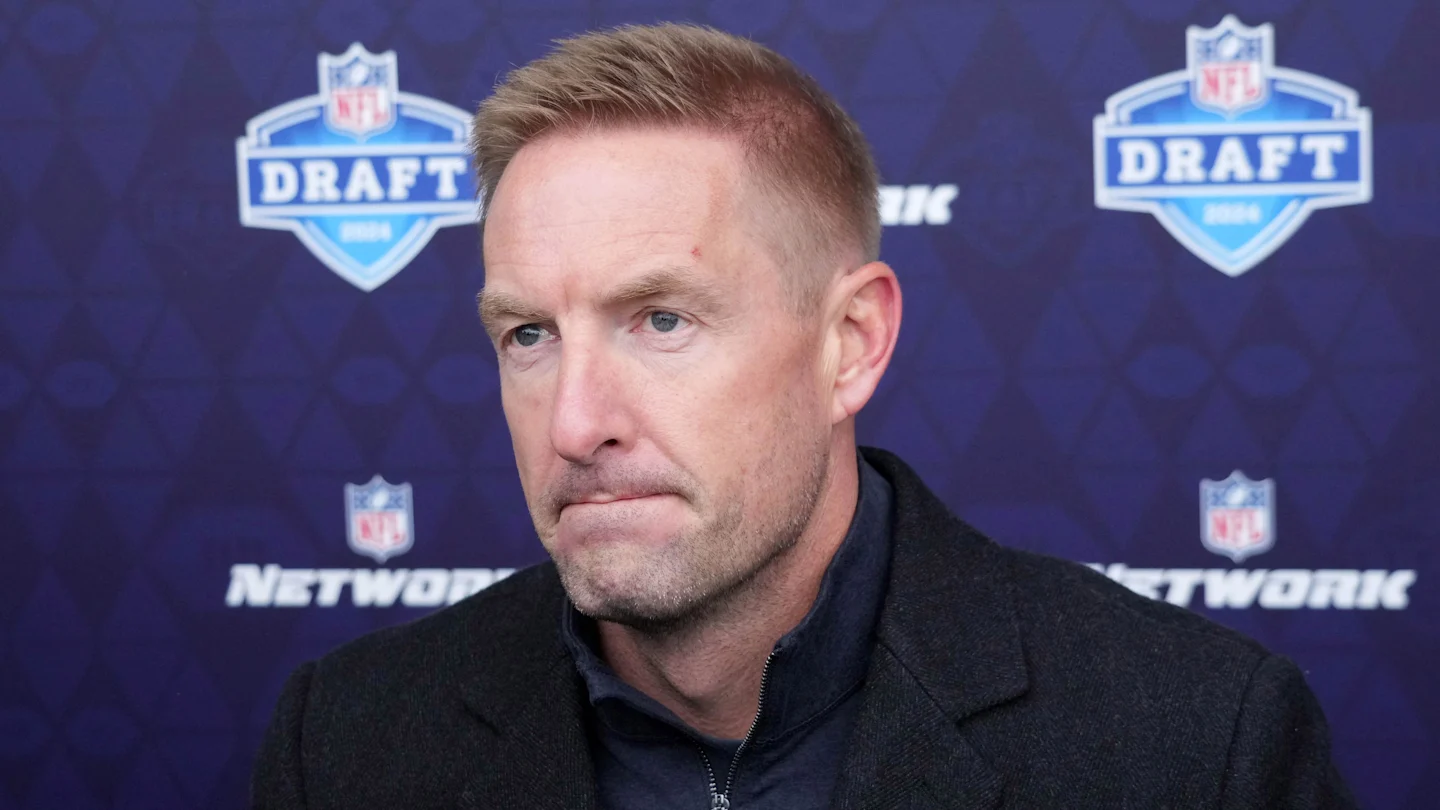
The College Football Playoff selection committee delivered a stunning blow to a prominent 10-win program on Sunday by excluding the team from the 12-team field. In response to the snub, the university announced it would decline any bowl invitation and end its season immediately.
This unprecedented move by the athletic director and head coach has drawn sharp criticism from national media figures. The leadership group felt the playoff spot was stolen after weeks of being ranked safely inside the bracket, leading them to opt out rather than play in a consolation game.
Notre Dame was positioned at No. 11 in previous rankings but fell out of the bracket in favor of the Miami Hurricanes. The Fighting Irish subsequently withdrew from the postseason, a choice that has sparked a significant debate regarding the culture of the sport.
Joel Klatt Labels The Decision A Big Mistake
Fox Sports college football analyst Joel Klatt addressed the controversy on The Joel Klatt Show, labeling the decision a significant error in judgment. Klatt argued that bypassing the postseason is an emotional reaction that negatively impacts the roster’s development. While the frustration in South Bend is palpable following the committee’s decision, the analyst believes the historic program is mishandling the situation.
Klatt outlined three primary concerns regarding the choice to pack up for the year. His first point focused on competitive development. Bowl preparation typically offers teams 15 extra practices, which are crucial for younger players. Klatt questioned how forfeiting this time helps the team prepare for the 2026 campaign.
“Bowl practice is where you develop for the next season,” Klatt said. “So, I don’t understand how just saying like, ‘No, we’re done with that,’ helps you for next year.”

The analyst also suggested the move appeared rooted in bitterness toward the selection process and the network broadcasting the games. He noted that the decision feels “petty” if it is based on anger regarding the weekly rankings reveal. Klatt emphasized that a program with such high stature should rise above such feelings.
“I think that that decision was born out of an emotional reaction rather than a disciplined response,” Klatt said. “And those two things are very different.”
Finally, Klatt directed a message to the athletes who may have played their final down of football. He warned that players might look back on this choice with regret. He stressed that athletes have a finite number of opportunities to compete at the highest level and should not artificially create a finish line.

Klatt also criticized the leadership strategy behind the choice. He compared the situation to parenting, noting that adults should intervene when young people react out of hurt feelings. He argued that leaders must prioritize logic over immediate emotional responses. ESPN analyst Paul Finebaum also took aim at the Irish fan base for their reaction to being left out of the playoff.
“I wouldn’t have asked the players what they wanted to do because they feel hurt,” Klatt said. “You don’t want to respond with your emotions. You want to respond with your reason and logic.”
Read more on College Football HQ
NIL
Josh Pate questions inclusion of Group of Five in CFP, suggests a G5 Playoff
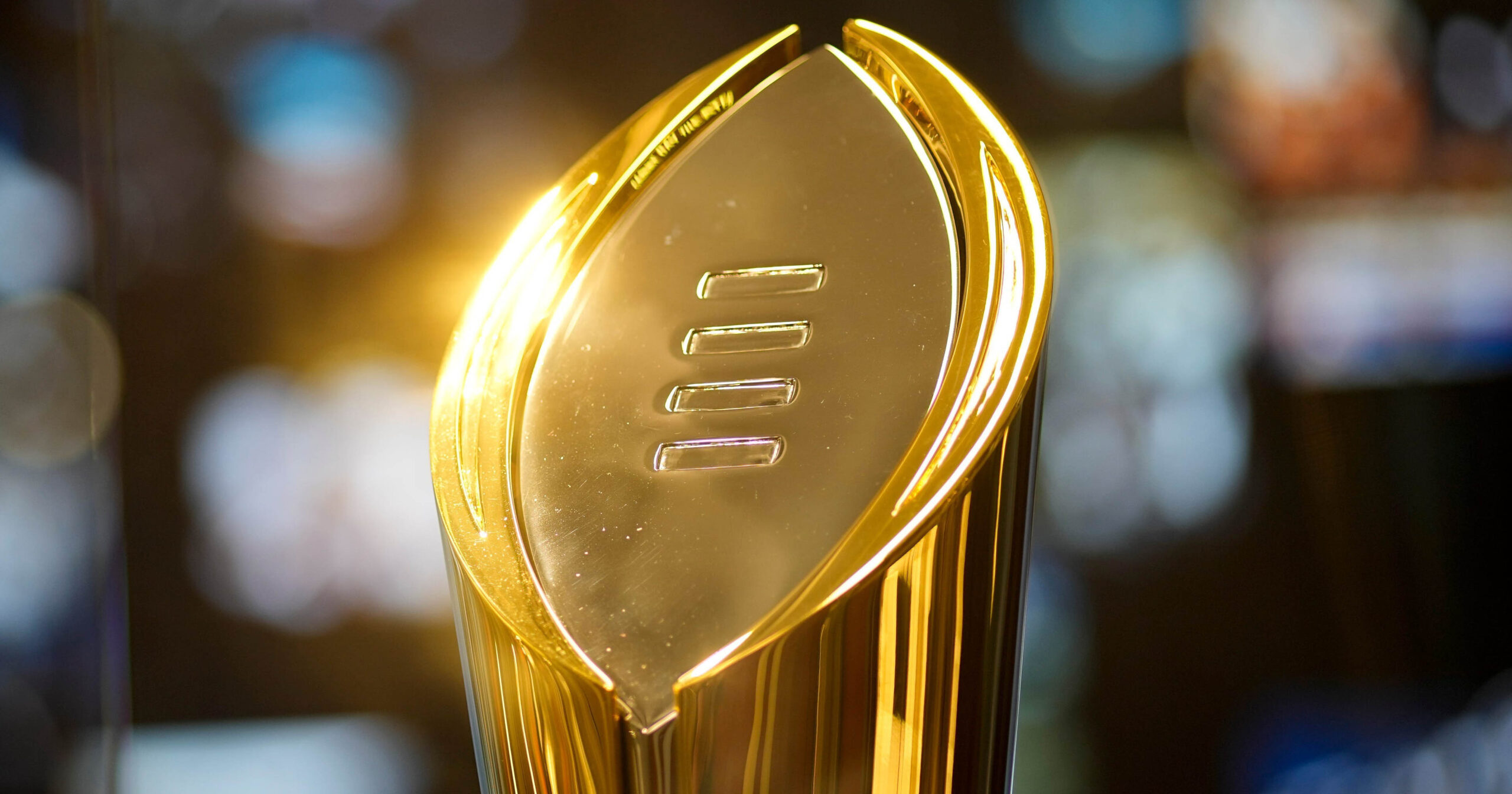
One of the biggest storylines of this edition of the College Football Playoff is the inclusion of two champions from the Group of Five, with No. 11 Tulane in out of the American and No. 12 James Madison in out of the Sun Belt. That has caused quite a lot of questions and criticism, with a suggestion now made to potentially fix that by Josh Pate.
During his reaction show to the reveal of the playoff on Sunday, Pate touched on the topic of the inclusion of the G5. He wondered about that aspect of this model altogether, as he thinks better contenders aren’t making the field for teams who may have next to no chance in the CFP.
“I do think a lot of people have started to throw around one of the proposals that we’ve made on the show, and that is, if you’re going to make the playoff, shouldn’t you at least have a minimum baseline ranking? I don’t know what that ranking would be. Shouldn’t you have to be Top-15? Shouldn’t you have to be Top-20?” said Pate. “A lot of people are looking at the fact that we’ve got two G5 teams in here, and, of course, that’s a joke. That’s a complete joke. It’s an utter disgrace to the overall spirit of what this thing is supposed to be about, that I got a team like Notre Dame sitting at home. Notre Dame could legitimately make a run to win a national title. They have that maximum capability. They’re going to sit at home, so that we made room for a team to be a three-plus touchdown underdog in Eugene, Oregon. So, yes, even the most diehard of G5, Cinderella supporters out there understand, from a pure principle standpoint, this makes no sense. And so I do think something will be done to address that.”
Pate addressed those same points later on in the show. With respect to the seasons just had by Tulane and James Madison, the fact is that they will be massive underdogs respectively in their first-round games against Ole Miss and Oregon, with little chance of them winning even a game, let alone multiple, as part of the College Football Playoff. That is why he doesn’t understand their insertions, even if that’s how the bracket is built, as teams like this from the Group of Five are unlikely to compete with these level of teams from the Power Four.
“Now we have to get uncomfortable. Now we have to broach the subject everyone is talking about. So, we have two G5 teams in the playoff – Tulane-Ole Miss, JMU-Oregon…So, people have some really, really strong thoughts on this. I’ve had strong thoughts on this for a while. I’ve told you for a while. It makes no sense that college football is structured the way it is, for many reasons, but it makes no sense that college football pretends that 136 teams are playing the same sport. It’s so obvious they’re not,” said Pate. “You got to get some smart people in the room to understand we can restructure the playoff, or we can rebuild the playoff entirely actually, to where you don’t have G5 inclusion in the main playoff, and still have a very, very nice, revenue-producing product that is exclusive G5. You know, a world where JMU can actually win the title, or Tulane could actually win the title. Now, everybody, logically, watching this or listening to this knows Oregon is not playing the same sport at JMU. Everybody knows that Ole Miss is not playing the same sport as Tulane. Everybody knows that. But, for some reason, we’re still forced to pretend that they are when it comes playoff time. So, you can say what I just said without having disdain or hate in your heart for the G5. I feel the total opposite! I love G5 football. I’d like to build a world, I’d like to build an ecosystem where it thrives, not cutting it out of this system to watch it die. That’s not how that has to happen.”
“The mental gymnastics that proponents of G5 inclusion put themselves through are so mind-numbing that I just remove myself from the conversation. Because the way I look at it is no G5 team is ever going to win this national championship. Certainly, they’re not. So, like, it’s never like they’re going to make a run in the playoff. The worst that happens is it takes away and robs us of what would be far more premier first-round playoff games, and then JMU and Tulane will get disposed of in the first round because they’re far inferior teams and then we’ll move on about the playoff. So, it’s not like I’m going to get burned,” Pate continued. “The argument you’re making is a very bad faith argument, if you’re making this one – ‘Well, you know, upsets have happened before!’. It’s so far away from the point that it doesn’t even deserve a reply, but here’s the reply. I don’t care if JMU goes and beats Oregon. It doesn’t disprove my point. My point is they don’t deserve inclusion in this format…The point there is we’re not playing the same sport. We’re not looking at the same sport…My point is not even that it’s impossible for them to pull the upset if they get in the playoff. My point is they shouldn’t be in the playoff to begin with because the road that they took looks way different than the road these other teams have to take.”
This comes a year after, in the original expanded format, Boise State (12-1), out of the Mountain West, earned a bye into the quarterfinals of the CFP. Now, a season later, Tulane (11-2) is in as the highest-ranked of the non-power conference champions after winning the American, while James Madison (12-1), due to the low rating of Duke (8-5) as the winner of the ACC Championship, managed to get in as well after winning the Sun Belt.
That all may have sounded like a lot of negativity for the G5, but, from there, Pate offered suggestions to better include them in the process of college football. He did, to a lesser extent, suggest the idea of relegation, with poor power teams moving down to make space for deserving mid-majors. His biggest idea, though, was creating a playoff specifically for the Group of Five, which Pate knows they would be able to market and sell, instead of them playing as part of the CFP.
“With all this money floating around right now, people are insane if they don’t think a G5 Playoff would sell, and sell big. Do you understand how desperate other networks are for quality postseason college football inventory?…You don’t think, if we took a package of G5 playoff games, and put them on any network, that it wouldn’t sell? Of course it would,” said Pate. “Invest in a G5 Playoff. Everybody wins. I’m not trying to box you out, by the way…So, the money is there to figure this out.”
“The argument it always boils down to is a fundamental argument. No one really looks at JMU and Tulane in the playoff and thinks to themselves, yep, purely from a competitive standpoint, this makes sense to me. You don’t think that…You want to make it because you want to make it. I’m talking about removing that lens, and looking at it purely from a logic-based, competitive standpoint,” continued Pate. “No one looks at this and thinks it makes sense, so the argument doesn’t come to that. The argument comes to, if we’re not involved in the College Football Playoff, we can’t make enough money to survive. And, what I’m saying is there is plenty enough money floating around the world of college athletics to get it figured out. That’s my point on that whole thing, and it should have long ago gotten figured out but it still hasn’t.”
This has now absolutely been a major talking point through the first two years in the expansion of the CFP. However, because of that, one way or another, Pate expects that we could see a change in that process because of it, as the playoff could be better balanced.
“I do think that there are changes coming,” said Pate. “I do think that that committee, just like they did this past year? They had one round, and then they adjusted their terms. And now they’ve had another round, and I think they’re going to adjust their terms again.”
-

 Rec Sports2 weeks ago
Rec Sports2 weeks agoFirst Tee Winter Registration is open
-

 Rec Sports2 weeks ago
Rec Sports2 weeks agoFargo girl, 13, dies after collapsing during school basketball game – Grand Forks Herald
-

 Motorsports2 weeks ago
Motorsports2 weeks agoCPG Brands Like Allegra Are Betting on F1 for the First Time
-

 Sports3 weeks ago
Sports3 weeks agoVolleyball Recaps – November 18
-

 Motorsports2 weeks ago
Motorsports2 weeks agoF1 Las Vegas: Verstappen win, Norris and Piastri DQ tighten 2025 title fight
-

 Sports2 weeks ago
Sports2 weeks agoTwo Pro Volleyball Leagues Serve Up Plans for Minnesota Teams
-

 Sports2 weeks ago
Sports2 weeks agoSycamores unveil 2026 track and field schedule
-

 Sports2 weeks ago
Sports2 weeks agoUtah State Announces 2025-26 Indoor Track & Field Schedule
-

 Motorsports2 weeks ago
Motorsports2 weeks agoRedemption Means First Pro Stock World Championship for Dallas Glenn
-

 Sports2 weeks ago
Sports2 weeks agoTexas volleyball vs Kentucky game score: Live SEC tournament updates






















































